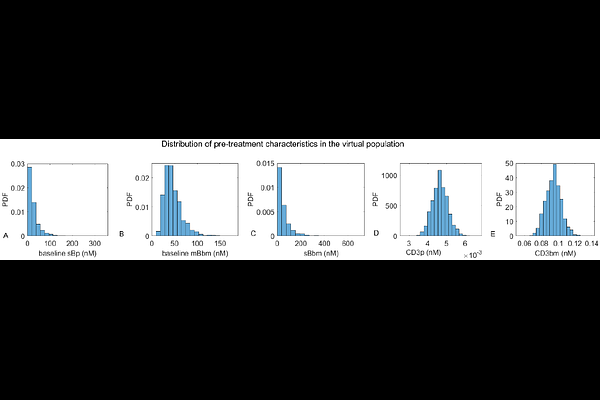Using Virtual Patients to Evaluate Dosing Strategies for Bispecifics with a Bell-Shaped Efficacy Curve

Using Virtual Patients to Evaluate Dosing Strategies for Bispecifics with a Bell-Shaped Efficacy Curve
Gevertz, J. L.; Kareva, I.
AbstractBispecific antibodies can be broadly divided into two categories: those that are pharmacologically active as either dimers bound to a single target or as trimers bound to both targets, and those that are only active as trimers. Dose selection of trimer-based bispecifics poses a unique challenge, as toxicity increases with dose, but efficacy does not. Instead, trimer-driven bispecifics have a bell-shaped efficacy curve, for which both under- and over-dosing can cause a decrease in efficacy. To address the challenge of dose selection for trimer-based bispecifics, we develop a semi-mechanistic pharmacokinetic/pharmacodynamic model of one such bispecific, teclistamab. By introducing variability in key patient-specific parameters, we find that the currently selected phase II recommended dose of 1.5 mg/kg administered subcutaneously weekly falls within the calculated optimal range for maximizing concentration of the pharmacologically active trimer for a broad population. We next explore different strategies for patient stratification based on pre-treatment levels of measurable biomarkers. We discover that significantly more variability across subpopulations is predicted when the drug is administered every two weeks as compared to weekly administration, and that higher doses generally result in more interpatient variability. Further, the pharmacologically active trimers are predicted to be maximized at different doses for different subpopulations. These findings underscore the potential for model-supported patient stratification based on measurable biomarkers, offering a middle ground between population-level approaches and fully personalized medicine.